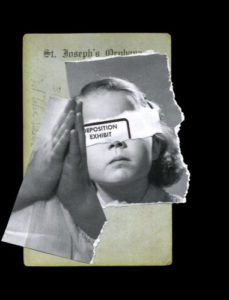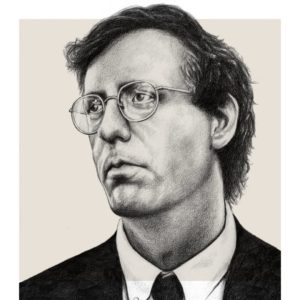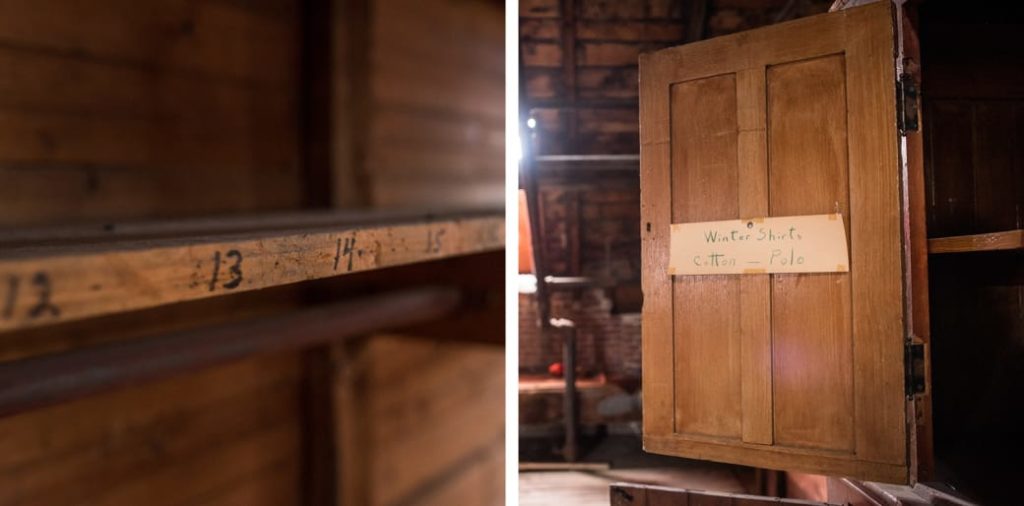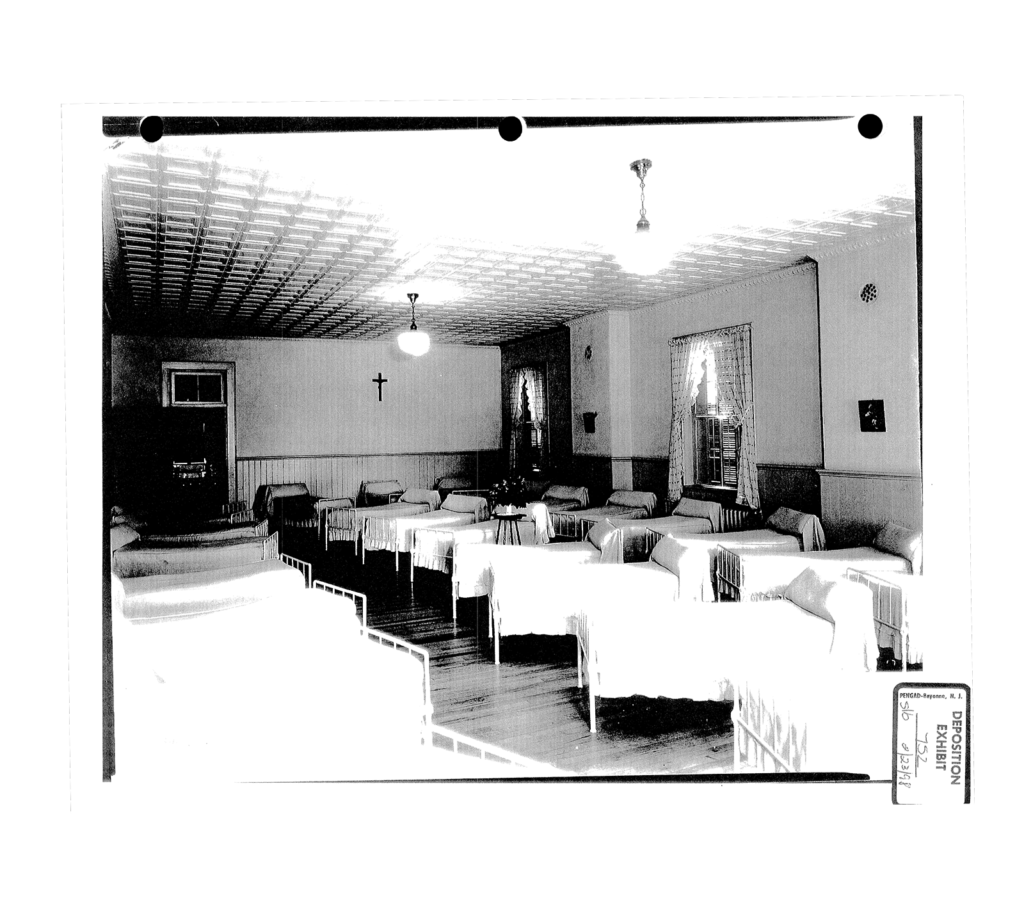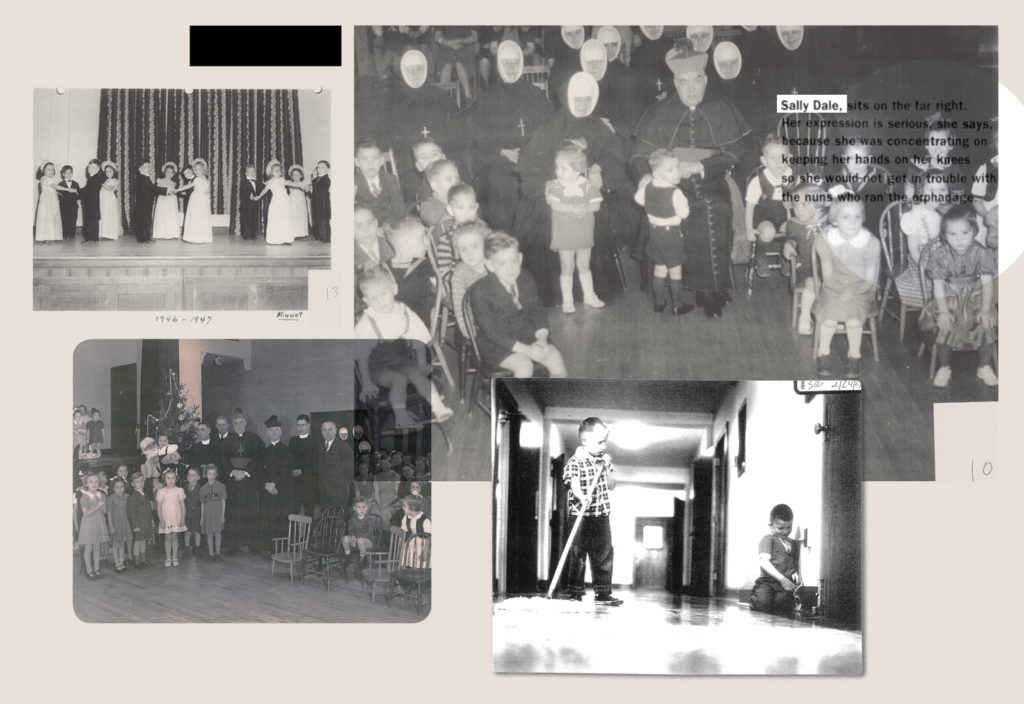We Saw Nuns Kill Children: The Ghosts of St. Joseph’s Catholic Orphanage
EXPOSURES - EXPOSÉS, HUMAN RIGHTS, ANGLO AMERICA, RELIGION, 12 Nov 2018
Christine Kenneally | BuzzFeed News Investigation – TRANSCEND Media Service
Millions of American children were placed in orphanages. Some didn’t make it out alive.
Aug 2018 – It was a late summer afternoon, Sally Dale recalled, when the boy was thrown through the fourth-floor window.
“He kind of hit, and— ” she placed both hands palm-down before her. Her right hand slapped down on the left, rebounded up a little, then landed again.
For just a moment, the room was still. “Bounced?” one of the many lawyers present asked. “Well, I guess you’d call it — it was a bounce,” she replied. “And then he laid still.”
Sally, who was speaking under oath, tried to explain it. She started again. “The first thing I saw was looking up, hearing the crash of the window, and then him going down, but my eyes were still glued—.” She pointed up at where the broken window would have been and then she pointed at her own face and drew circles around it. “That habit thing, whatever it is, that they wear, stuck out like a sore thumb.”
A nun was standing at the window, Sally said. She straightened her arms out in front of her. “But her hands were like that.”
There were only two people in the yard, she said: Sally herself and a nun who was escorting her. In a tone that was still completely bewildered, she recalled asking, Sister?
Sister took hold of Sally’s ear, turned her around, and walked her back to the other side of the yard. The nun told her she had a vivid imagination. We are going to have to do something about you, child.

The back of the now-closed St. Joseph’s Orphanage in Burlington, Vermont. Ian MacLellan for BuzzFeed News
Sally figured the boy fell from the window in 1944 or so, because she was moving to the “big girls” dormitory that day. Girls usually moved when they were 6, though residents of St. Joseph’s Orphanage in Burlington, Vermont, did not always have a clear sense of their age — birthdays, like siblings and even names, being one of the many human attributes that were stripped from them when they passed through its doors. She recounted his fall in a deposition on Nov. 6, 1996, as part of a remarkable group of lawsuits that 28 former residents brought against the nuns, the diocese, and the social agency that oversaw the orphanage.
I watched the deposition — all 19 hours of grainy, scratchy videotape — more than two decades later. By that time sexual abuse scandals had ripped through the Catholic Church, shattering the silence that had for so long protected its secrets. It was easier for accusers in general to come forward, and easier for people to believe their stories, even if the stories sounded too awful to be true. Even if they had happened decades ago, when the accusers were only children. Even if the people they were accusing were pillars of the community.
But for all these revelations — including this month’s Pennsylvania grand jury report on how the church hid the crimes of hundreds of priests — a darker history, the one to which Sally’s story belongs, remains all but unknown. It is the history of unrelenting physical and psychological abuse of captive children. Across thousands of miles, across decades, the abuse took eerily similar forms: People who grew up in orphanages said they were made to kneel or stand for hours, sometimes with their arms straight out, sometimes holding their boots or some other item. They were forced to eat their own vomit. They were dangled upside down out windows, over wells, or in laundry chutes. Children were locked in cabinets, in closets, in attics, sometimes for days, sometimes so long they were forgotten. They were told their relatives didn’t want them, or they were permanently separated from their siblings. They were sexually abused. They were mutilated.
They were forced to eat their own vomit. They were dangled upside down out windows, over wells, or in laundry chutes.
Darkest of all, it is a history of children who entered orphanages but did not leave them alive.
From former residents of America’s Catholic orphanage system, I had heard stories about these deaths — that they were not natural or even accidents, but were instead the inevitable consequence of the nuns’ brutality. Sally herself described witnessing at least two incidents in which she said a child at St. Joseph’s died or was outright murdered.
It’s likely that more than 5 million Americans passed through orphanages in the 20th century alone. At its peak in the 1930s, the American orphanage system included more than 1,600 institutions, partly supported with public funding but usually run by religious orders, including the Catholic Church.
Outside the United States, the orphanage system and the wreckage it produced has undergone substantial official scrutiny over the last two decades. In Canada, the UK, Germany, Ireland, and Australia, multiple formal government inquiries have subpoenaed records, taken witness testimony, and found, time and again, that children consigned to orphanages — in many cases, Catholic orphanages — were victims of severe abuse. A 1998 UK government inquiry, citing “exceptional depravity” at four homes run by the Christian Brothers order in Australia, heard that a boy was the object of a competition between the brothers to see who could rape him 100 times. The inquiries focused primarily on sexual abuse, not physical abuse or murder, but taken together, the reports showed almost limitless harm that was the result not just of individual cruelty but of systemic abuse.
In the United States, however, no such reckoning has taken place. Even today the stories of the orphanages are rarely told and barely heard, let alone recognized in any formal way by the government, the public, or the courts. The few times that orphanage abuse cases have been litigated in the US, the courts have remained, with a few exceptions, generally indifferent. Private settlements could be as little as a few thousand dollars. Government bodies have rarely pursued the allegations.
So in a journey that lasted four years, I went around the country, and even around the world, in search of the truth about this vast, unnarrated chapter of American experience. Eventually I focused on St. Joseph’s, where the former residents’ lawsuits had briefly forced the dark history into public view.
The former residents of St. Joseph’s told of being subjected to tortures — from the straightforwardly awful to the downright bizarre — that were occasionally administered as a special punishment but were often just a matter of course. Their tales were strikingly similar, each adding weight and credibility to the others. In these accounts, St. Joseph’s emerged as its own little universe, governed by a cruel logic, hidden behind brick walls just a few miles past the quaint streets of downtown Burlington.
When I first started looking, it seemed that all that remained of St. Joseph’s were deposition transcripts and the sharp, bitter memories of the few remaining survivors I was able to find. But over the course of years I found that there was far more to discover. More than the former residents themselves knew, and more than was uncovered during the 1990s legal battle. Through tens of thousands of pages of documents, some of them secret, as well as dozens of interviews, what I found at St. Joseph’s and other American orphanages was a vast and terrible matrix of corroboration.
The Diocese of Burlington, Vermont Catholic Charities, and the Sisters of Providence, the order of nuns who worked at St. Joseph’s, all chose not to speak with me about these allegations. At the end of my reporting, Monsignor John McDermott, of the Burlington Diocese, provided a brief statement: “Please know that the Diocese of Burlington treats allegations of child abuse seriously and procedures are in place for reporting to the proper authorities. While it cannot alter the past, the Diocese is doing everything it can to ensure children are protected.”
For decades, Sally Dale, like so many of the children of St. Joseph’s, avoided speaking about what happened there. Many of the orphans went on to marry, and to have children and grandchildren, without letting on that they had spent any time in an orphanage. Some, their trust forever shattered, had been unable to forge any close connections. Robert Widman, the attorney who sat beside Sally, offered them a chance to be heard, and to force the world outside the orphanage to reckon with what went on inside its walls.
That legal effort lasted three years. It cost Widman’s law firm dearly, and it pushed him to the edge emotionally. Decades later, he described it as one of the most wrenching cases of his life.
For the former residents of St. Joseph’s — and for people in Albany and Kentucky and Montana who emerged from orphanages with similar stories — the fight was something much more. It was a chance most of them had never had before: to be heard, and maybe believed.
For the Catholic Church, too, the stakes were enormous. If the Burlington plaintiffs won, it could create a precedent and encourage civil cases at a massive scale. The financial consequences would be hard to fathom. Widman and his band of orphans posed a profound threat, and the church was going to bring all its might to oppose it.
httpv://www.youtube.com/watch?v=o13yTTAeM30
Philip White was sitting in his large, third-floor law office one afternoon in 1993 when the mysterious caller arrived. He said his name was Joseph Barquin.
White invited him to have a seat and tell his story. Barquin asked White to send his secretary out so the two men could speak privately.
Barquin said he had recently married, and that his new wife had been shocked by the sight of terrible scars on his genitals.
Barquin told White what he had told her: that in the early 1950s, when he was a young boy, he had spent a few years in an orphanage called St. Joseph’s in Burlington, Vermont. It had been a dark and terrifying place run by an order of nuns called the Sisters of Providence. Barquin recalled a girl who was thrown down stairs, and he remembered the thin lines of blood that trickled out of her nose and ear afterward. He saw a little boy shaken into uncomprehending shock. He saw other children beaten over and over.
A nun at St. Joseph’s had dragged Barquin into an anteroom under the stairs and forcefully fondled him, and then she cut him with something very sharp. He didn’t know what it was; he just remembered that there was blood everywhere.
Barquin’s wife had encouraged him to go to therapy. To get help with the cost, and to get an apology, Barquin spoke to two priests at the diocese, but he received very little response. Now he wanted to sue.
He had come to the right lawyer. As a prosecutor in Newport, Vermont, and then as a private attorney, White had devoted his career to challenging and changing the prevailing wisdom about young victims of sexual abuse.
Before 1980, White told me, social services typically steered child abuse victims away from court, because the process was thought to be too traumatic for the children and the cases were too hard to prove. White maintained that the fear of trauma had more to do with the adults’ discomfort than with the actual needs of the children. So he and some of his colleagues brought together social services, police, and probation officers and created a new set of protocols for how abuse should be addressed. White and his colleagues traveled around the state, and eventually the country, encouraging different agencies to work together, and educating mental health workers and teachers about how and why to report abuse. When prosecutors said they didn’t go after child sexual abuse because they couldn’t face the guilt of losing, White would reply, “If you don’t bring the case, how can you sleep?”
White’s team developed a way for children to testify on closed-circuit TV so they wouldn’t have to tell their story in front of their abuser. Whenever a young client testified, White threw a party, with cake and balloons and streamers. He told the children that regardless of how the case was decided, they had spoken their truth, and that was the victory.
When bearing witness to the most disturbing experiences of Vermont’s children became too much, White would find the steepest ski slope and fly down, screaming his head off all the way, until he felt calm enough to return to his work.
For all the cases he had worked on, however, he had never heard a story quite like Barquin’s.
Barquin recalled a girl who was thrown down stairs, and he remembered the thin lines of blood that trickled out of her nose and ear afterward.
He knew from experience what it was like to challenge the diocese. Barquin’s assault had taken place decades ago, which would make it hard for White to find corroboration — and easy for the church to question Barquin’s memory. And as hard as it would still have been, in that era, to convince jurors that a priest could be a sexual predator, making that argument about a nun was going to be much harder.
Still, White decided to take Barquin’s case. He lodged a complaint in the US District Court at Brattleboro, Vermont, on June 7, 1993, seeking damages for Barquin’s injuries from physical, psychological, and sexual abuse at St. Joseph’s Orphanage 40 years before. The defendants he named were the Burlington Diocese, Vermont Catholic Charities, the orphanage, and, because Barquin didn’t know the name of the nun who abused him, Mother Jane Doe.
The diocese was represented by Bill O’Brien, a lawyer who worked for the church, as had his father before him. O’Brien noted that according to Vermont’s statute of limitations, adults who were abused as children have six years from the moment they realize they were damaged by the abuse to bring suit. Barquin had had 40 years to work out what had caused his injuries, O’Brien said, during which time relevant evidence or witnesses may have been lost. In a long memo to the judge, the church’s lawyers lectured White on points of law, quoting an opinion from a medical malpractice suit that said “the law is not designed to aid the slothful in evading the results of their own negligence.”
White arranged a press conference for Barquin to tell his story, in hopes it might bring other St. Joseph’s survivors out into the open.
In his years since leaving the orphanage, Barquin had led an adventurous life. He had worked as a diver, unearthing old shipwrecks and ancient fossils. He had spent time at the famous Naropa Institute in Colorado, hanging out with Ram Dass and Allen Ginsberg. He’d even led dolphin encounters. But the day of his press conference, Barquin felt like he was lighting a match inside a dark and ominous cave. He was scared, but hopeful that he might inspire others to do the same.
White hoped he might hear from a few more former St. Joseph’s residents. He heard from 40. Soon a support group called the Survivors of St. Joseph’s Orphanage and Friends formed. Participants said it grew to 80 members.
The meetings were unpredictable. Some former residents said that the orphanage was the best thing that ever happened to them. Others recounted constant cruelty and physical abuse. Some threatened violence against clergy members. One woman said she was writing a book. Another, who had been at the orphanage in the 1920s, called to tell her story, weeping in fear that God would punish her for saying it aloud. One man turned up outrageously drunk. Another spoke about how, at home, he would regularly lock himself in a box. Someone wrote to White to warn him that the diocese had sent a spy.
Around that time, one former resident killed himself. Survivors fought among themselves about what strategy to pursue. At one meeting, a woman was shouted down when she suggested that they all contact the bishop together. Some wanted therapists present at the meetings, but others were appalled by the suggestion.
Eventually White decided to convene a big gathering at the Hampton Inn in Colchester, Vermont, on the weekend of Sept. 18, 1994.
Some of the women recognized each other not by name but by number: Thirty-two! Fourteen!
Sally Dale received an invitation. It said the event was a reunion for “survivors” of St. Joseph’s, which struck Sally as an odd word to use. She hadn’t been in touch with people from the orphanage for a long time, and she thought about it as little as possible. But she was curious to see some of the old faces and find out who was still around.
She was only a few steps inside the conference room when a man exclaimed, “You little devil!”
It was Roger Barber, one of the boys from St. Joseph’s, who was there with his two sisters. Little devil: That’s what they used to call her. She hadn’t thought of it in so long.
“Sal, you look good for everything you went through,” one of Barber’s sisters said.
“You were our Shirley Temple of the orphanage!” said the other. She reminisced about the way Sally sang “God Bless America” and “On the Good Ship Lollipop” when she was little.
Sally remembered some of those things. She sometimes remembered bad things too, such as times when the nuns hit her. But it was a long time ago. She recognized few of the 50 or 60 people in attendance. Little Debbie Hazen was there, and so was Katelin Hoffman, along with Coralyn Guidry and Sally Miller. Some of the women recognized each other not by name but by number: Thirty-two! Fourteen!
White began the day by introducing Barquin and some other people who were there to help. A man spoke about the Bible and turning to God in times like these, and two therapists said they were available for anyone who wanted to talk. Local journalists were on hand too.
Then Barquin told everyone about the nun taking him into the closet. Roger Barber spoke next. Sally remembered him saying that a nun told a group of older boys to rape him. As the stories tumbled out, former residents melted down in the meeting room and in the hotel’s hallways. A lanky, weathered man stood up and addressed another man before the whole crowd. I’m here because back in the orphanage I bullied you, he said. I felt bad about that all of my life. I just want to say I’m sorry. Then one woman spoke about how nuns wiped her face in her own vomit, and Sally started to remember that the same thing had happened to her. She could hear the voice of one sister telling her, after she threw up her food, You will not be this stubborn! You will sit and you will eat it.
A woman said she’d watched a nun hold a baby by its ankles and swing its head against a table until it stopped crying. As Sally listened to the awful stories, something ruptured inside her. She shook her head and began to say, “No, no, no, no, no, it’s not true.” But the memories were already flooding back.
Though the reunion was a two-day event, Sally left that first afternoon with a crushing headache. The next morning she had diarrhea and was unable to speak without heaving. She spent that night sitting bolt upright, remembering things she hadn’t thought about for decades, and saying, “No, no, no, no, no.” When her husband asked her why she was saying “no,” she just replied, “No.”
South of Lone Rock Point, where North Avenue runs high above the eastern shore of Lake Champlain, beyond the winding paths that meander through the cemetery, behind the heavy doors of the large redbrick building, Sally was back in the orphanage. Probably not yet 6 years old, she was being marched toward the sewing room, compelled by a furious nun.
Sally had been caught running and giggling in the dormitory. The nun, Sister Jane of the Rosary, was known for her constant companion: a thick razor strap that the girls called “the green pill,” bitter medicine for any child who came near it.
Sister Jane of the Rosary took Sally to the little bedroom off the sewing room and made her lie facedown, dress yanked up, panties pulled down. Then the nun sent in Eva, a seamstress, who along with another lay employee, Irene, was one of the only two people that Sally felt safe with.
Eva came into the little room, looked at Sally — face down, dress up, defenseless — and stood frozen for a few long moments. The strap lay beside her on the bed. Then she left. Irene came in next, but she couldn’t do anything, either. Even Sister Jane of the Rosary, usually so quick to punish, came in but did nothing.
At last Sally heard Sister James Mary announce that she had “no problem” performing the task. Entering the room, she brought the strap down hard on Sally, from the back of her neck all the way down to her ankles. Once, twice. Ten times. Too many times to count.
Sally recoiled with each downstroke, but she tried her best to hold back the tears. The silence only enraged Sister James Mary, who kept hitting her. On and on, the blows kept coming. “You will cry!” the nun insisted.
Eventually Sally did. She began to weep.
Sally couldn’t twist around far enough to see the damage. But when Irene looked, she gasped.
“How many times do we have to tell you?” Sister Jane of the Rosary demanded from above. “If you cry, you cry alone. If you smile, the whole world smiles with you.”
Irene brought Sally across the long hallway, down the marble stairs, past the foyer, and into the office of the mother superior herself. Irene showed her Sally’s wounds. It wasn’t right to do that to a little girl.
Mother Superior replied that Sally was going to end up in reform school anyway.
The next time Sally was sent to Irene and Eva for a beating, Irene said she would deal with the child herself.
Irene hit her, but only on her bottom. Sally was so overwhelmed with gratitude that the next day, she told Irene that she loved her.
As the Burlington survivors group gained momentum, Joseph Barquin emerged as an extraordinary force for change. A judge had allowed his sexual assault case to go forward, and he was proving himself to be a tenacious litigant, rallying others to the cause and even doing his own investigative work. He visited a number of Sisters of Providence nuns at the local motherhouse, interviewing them on tape: “Who was the sister that was a real disciplinarian?” But his outsize role and expectations complicated matters. Having been the first to come forward, he believed that his ideas should carry extra weight. His relationship with White deteriorated over what Barquin perceived to be a lack of respect. Relations with the group frayed as well. Eventually a delegate said several members felt threatened by Barquin.
White came to the painful conclusion that he could not continue to represent Barquin and encouraged him to find new counsel. White planned to focus on the claims of the other former residents. But as all that was going on, White’s doctor told him that he had adult-onset diabetes. He had two children, one of them newborn, and it became clear that his firm was too small to provide all the resources needed to handle all the cases coming his way. White realized that if he was going to represent the orphans with integrity and competence, he would have to sacrifice everything else. “I’d basically have to leave my family, find a miracle drug for my diabetes, and find a new law firm,” he said later.
Around the same time, the bishop made a formal offer: $5,000 per person, in exchange for which the recipients would waive their right to further legal action.
White hated to see the cases end like that, but he knew that the statute of limitations would have prevented some of the plaintiffs from ever getting their day in court. And for many of them, $5,000 was serious money. He told his clients that he could not advise them what path to choose, but if anyone wanted to settle, he would help.
The Burlington Free Press reported that according to church officials, 100 people accepted the payment, for abuse they said they suffered. Plaintiffs said as many as 160 individuals, who had been at the orphanage from the 1930s to the 1970s, pursued the bishop’s offer.
For every one of those he represented, White sent a letter to Bill O’Brien, the church’s attorney.
“If L was caught not paying attention, the nuns would take a needle and regularly prick his fingertips.”
“Dear Bill,” one of the letters said, “K remembers that Sister Madeline and Sister Claire … slapped her head and face, pulled her hair, struck her face with the backs of their hands, so that their rings split her lips, and tripped her and knocked her down.“
“Dear Bill … To this day, C will not enter a closet if it has a hanging light.”
“Dear Bill … If L was caught not paying attention, the nuns would take a needle and regularly prick his fingertips.”
“Dear Bill … The nuns would also force G and other children to hold their arms up at their sides, with their palms up in the air, balancing a book on the palms. If G dropped his arms before the requisite time was up, he would be beaten and forced to repeat the punishment all over again.”
The bishop published a letter around the same time. In a larger sense they were all victims, he said: children who had been abused, as well as the good priests and brothers and nuns. “If anyone has been hurt by any church official in anyway,” he wrote, “I am heartily sorry.”
Sally Miller, the woman who had suggested contacting the bishop at one of White’s survivors meetings, went ahead and visited him herself. She said he told her that if modern-day laws had been in place when he was a child, his own father would have been charged with child abuse, and yet he had got over what had happened to him. He didn’t understand why other people couldn’t get over what had happened to them.
They were just kids, Miller later testified that she told him.
Well, these nuns were just frustrated ladies, she said he replied. They didn’t have children of their own, and they didn’t know how to handle them.
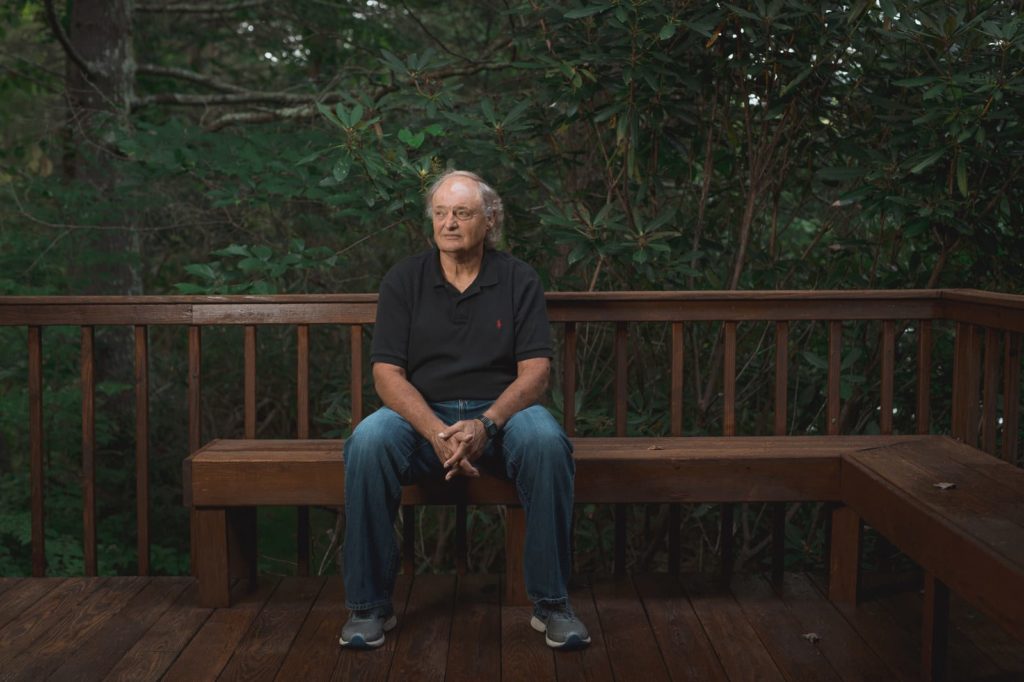
Retired lawyer Robert Widman at his house in Burnsville, North Carolina.
Mike Belleme for BuzzFeed News
Joseph Barquin contacted Robert Widman, a well-regarded lawyer near where he lived in Sarasota, Florida, whom he’d heard of from a friend of a friend. Much like Philip White, Widman didn’t immediately form an opinion as to whether Barquin was telling the truth, but he thought it was worth exploring further.
(…)
___________________________________________________
 Christine Kenneally – BuzzFeed, Senior Contributor
Christine Kenneally – BuzzFeed, Senior Contributor
To continue reading Go to Original – buzzfeednews.com
DISCLAIMER: The statements, views and opinions expressed in pieces republished here are solely those of the authors and do not necessarily represent those of TMS. In accordance with title 17 U.S.C. section 107, this material is distributed without profit to those who have expressed a prior interest in receiving the included information for research and educational purposes. TMS has no affiliation whatsoever with the originator of this article nor is TMS endorsed or sponsored by the originator. “GO TO ORIGINAL” links are provided as a convenience to our readers and allow for verification of authenticity. However, as originating pages are often updated by their originating host sites, the versions posted may not match the versions our readers view when clicking the “GO TO ORIGINAL” links. This site contains copyrighted material the use of which has not always been specifically authorized by the copyright owner. We are making such material available in our efforts to advance understanding of environmental, political, human rights, economic, democracy, scientific, and social justice issues, etc. We believe this constitutes a ‘fair use’ of any such copyrighted material as provided for in section 107 of the US Copyright Law. In accordance with Title 17 U.S.C. Section 107, the material on this site is distributed without profit to those who have expressed a prior interest in receiving the included information for research and educational purposes. For more information go to: http://www.law.cornell.edu/uscode/17/107.shtml. If you wish to use copyrighted material from this site for purposes of your own that go beyond ‘fair use’, you must obtain permission from the copyright owner.
Read more
Click here to go to the current weekly digest or pick another article:
EXPOSURES - EXPOSÉS:
- WikiLeaks Has Just Put All Its Files Online--It’s All There!
- How the Opiate Conspiracy Widened
- Inside Israel’s Torture, Rape, and Dehumanization Centers [Sickening]
HUMAN RIGHTS:
- How the Human Rights Industry Manufactures Consent for “Regime Change”
- Genocide Emergency: Gaza and the West Bank 2024
- ‘We Will Leave When the Last Palestinian Leaves’: The Defiant Last Stand of the Doctors of Kamal Adwan Hospital
ANGLO AMERICA:
- "They're Kissing My Ass": Trump Says Tariffs Are Going Great, Promises Duty on Pharmaceuticals
- US Concentration Camps
- US ‘Demands Control’ from Ukraine of Key Pipeline Carrying Russian Gas
RELIGION:
